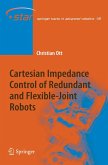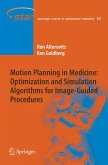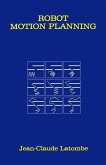Yunong Zhang is a professor at The School of Information Science and Technology, Sun Yat-sen University, Guangzhou, China; Zhijun Zhang is a research fellow working at the same institute.
Dieser Download kann aus rechtlichen Gründen nur mit Rechnungsadresse in A, B, BG, CY, CZ, D, DK, EW, E, FIN, F, GR, HR, H, IRL, I, LT, L, LR, M, NL, PL, P, R, S, SLO, SK ausgeliefert werden.
"The book is primarily a collection of the first author's work, from a decade of projects focused on developing motion planning schemata for redundant robots. ... Each of the 11 chapters includes a reference list, and there are four appendices and a glossary. ... The book is a typical research book, convenient for researchers, those in industry, and graduate students in automation, since it presents a comprehensive view of an approach to solving the RMP problem." (G. Gini, Computing Reviews, October, 2013)









